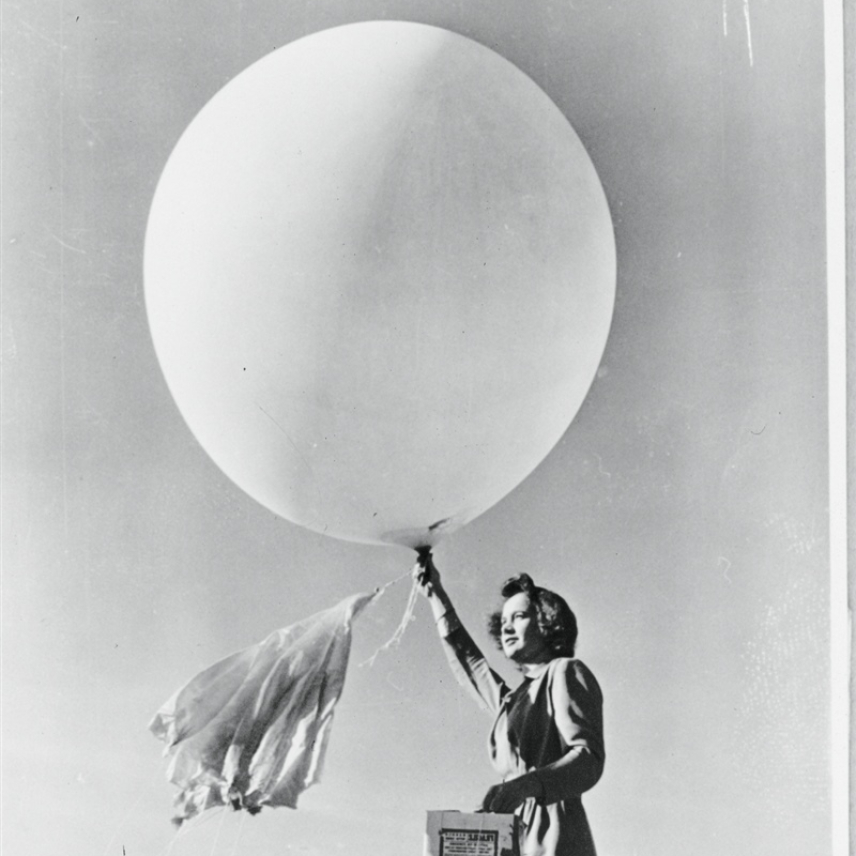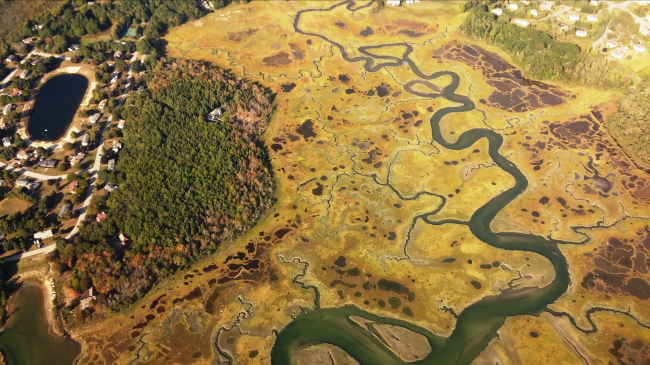Unlocking the mysteries of a ‘top secret’ profession

Eric Lopez, Kathlyn Nguyen, and Omar Madrigal, members of the California State Polytechnic University - Pomona team, having discarded their colonial wigs, make calculations for one of the practical tests in the National Society of Professional Surveyor Student Competition. (Image credit: NOAA Heritage)
At the peak of this year’s cherry blossom bloom in Washington, D.C., teams of students descended upon the National Mall and began surveying the land around them. One group was wearing white colonial wigs. Another was in wool vests and caps and sport jackets circa 1910. Even more puzzling: These students were carrying around antique tools, peering through optical viewfinders poised on top of wooden tripods, and unrolling metal chains to walk off the distances between two points.
Sometimes, to find the future you have to visit the past. In this case, the students with the vintage costumes were using old-school surveying tools to measure some of the capital’s oldest buildings as part of a competition jointly hosted by NOAA’s National Geodetic Survey and the National Society of Professional Surveyors offsite link. The organizers hope the students will become future surveyors.
A lot of people think when you say you do surveying, you are a poll-taker, not a measurement professional, said Joe Fenicle, one of the competition’s faculty advisors. “We joke that surveying is a top secret profession.”
Fenicle is an assistant professor at the University of Akron, and he’s seen a huge demand for the work, and not enough people to get projects done as needed. “In the entire state of Michigan, for example, there are only seven professionals younger than 30,” he said.
Jacob Heck, a Regional Geodetic Advisor at NOAA’s National Geodetic Survey and incoming president of the Young Surveyors Network offsite link, said he also recognizes the lack of a younger cohort. Few people know that surveyors are the professionals who work to make the precise measurements that determine property boundaries, and virtually no one knows about the career options in the closely related field of geodesy – the science of accurately measuring and understanding the Earth's geometric shape, orientation in space, and gravity field.
Many organizations use geodesy to map the U.S. shoreline, determine land boundaries, and improve transportation and navigation safety. NGS is the government agency responsible for maintaining a set of accurately measured points that form the National Spatial Reference System, which allows different kinds of maps to be consistent with one another.
The numbers and measurements are essential to commerce and security, but remain unseen by most people. They are sometimes called the nation’s “invisible infrastructure.” The lack of new practitioners in the field that builds that infrastructure and maintains it has been labeled a national level crisis offsite link.

To attract potential future practitioners, Heck and others recently revamped the 20-year old national student surveying competition offsite linkto be mainly a hands-on, in-the-field experience. This year, that meant surveying for guide points around the Capital’s monuments. Students were given extra points for coming in period-specific costumes as a way to emphasize the long history and legacy of the work.
The guide points are mostly small metal discs set into the sidewalk or other pieces of infrastructure around the Mall, and they help NGS to synchronize all of their official maps. But one guide point known as “Bench Mark A” is hidden under a manhole cover next to the Washington Monument and is actually a 14-foot tall replica of the obelisk itself.
This mini-monument rests on the ground surface that was exposed when the big monument was built. It served as an architectural model and a survey mark during construction of the big monument. The hill that is now the ground surface around the full sized Washington monument was built up afterwards, and the mini-monument was encased in the brick well and covered by the man-hole.
The manhole cover was removed for the day of the competition and the students were given a rare look at the mini-monument. To connect the past with the future, volunteers from Dewberry’s survey department brought cutting edge laser scanning equipment to survey this historic monument while the cover was off.


For the competition, students were also judged on their ability to make precise field measurements around the Jefferson Pier, a stone that marks the location that the nation’s third president lined up the front door of the White House with the Capitol rotunda in the hopes of establishing the country’s own prime meridian line in 1804.
Grading was based on a combination of total points for survey markers found during the scavenger hunt day and accuracy of measurements and computation of final answers during the field exercises. Professionalism was also included in the grading, with bonus points given for period dress.
Aniyea Dickerson from Klein Collins High School in Houston, Texas said that the best part of being in the competition was coming to D.C, where she hopes to one day attend Howard University. She also liked learning about a possible career and enjoyed using the old tools.
“We saw photos and we were told, ‘You’ll be using this.’ We were like: how do you use it? They said, “We don’t know, we haven’t ever touched it. It's very rare’,” Dickerson said with a laugh. The competing teams first saw the actual equipment the night before taking them in hand out in the Mall.
“These exercises focus on the fundamentals, encouraging the students to be problem-solvers who understand how the processes work, and not just button pushers,” said Heck. “Besides that, they get a really cool experience by exploring our nation's capital.”
The veteran surveyors seemed to get a needed morale boost as well.
“As corny as it sounds, it's great to see the future of surveying out here,” said Jack Larter, a competition judge and Cartographic Technician for NOAA’s National Geodetic Survey.






